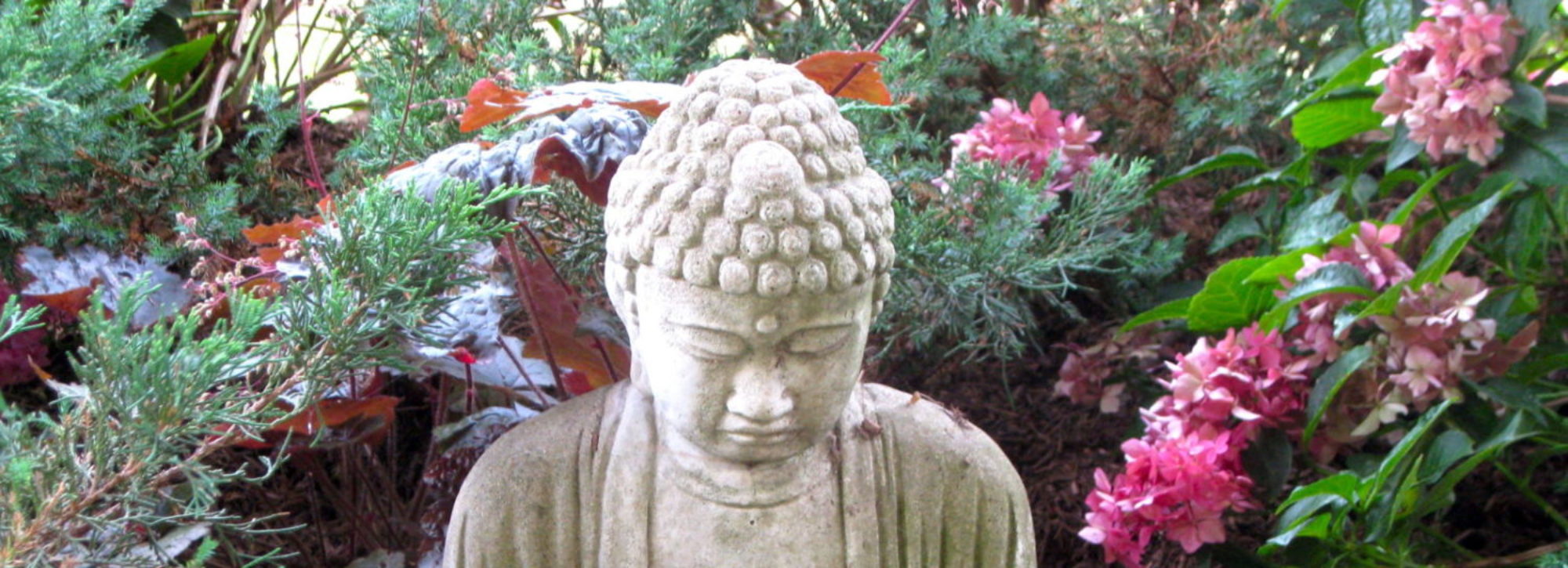When we experience the world, we experience not only the ”just-there-ness” of things, but also the ”what-they-are-for-us” of them. I experience that chair over there, not as a swatch of blue with such-and-such a form, but as something to sit on. The meanings of things as they appear to us are always informed by the actions we can perform on or with them—actions that begin and end with our need as organisms to assimilate the external world and accommodate to it. In addition to the sensory qualities of our experience and the implicit knowledge gained from our past interactions with things, our immediate experience is also inflected by dimensions of value—truthfulness, aesthetics, and ethics. Cultures and individuals may differ as to how they define what is specifically ethical, beautiful, or true, but every culture and every person apprehends these realms of value in roughly the same way. While you and I might disagree on whether a specific painting is beautiful or whether a specific fact happens to be true, we both understand what it means to say that a painting is beautiful or a fact is true.
These value realms are manifest in the structure of experiencing. By this I mean that—at least in the very simplest of cases—they are experienced effortlessly, immediately and directly. When we see a sunset, we don’t need to think about whether it’s beautiful or not—we immediately experience it that way. If I tell you that there’s a unicorn in the room with us, your sense of my statement being either false, a joke, or evidence of my insanity is immediate. You don’t need to deliberate about it. You don’t need to resort to inductive or deductive reasoning. If we see an adult torturing a child, we don’t need to reflect on the categorical imperative to know the behavior is unethical. We feel it viscerally and immediately with every fiber of our body. While the specifics of what we find decent, beautiful, or true vary from era to era and culture to culture, what doesn’t vary is the fact that these realms exist–and in simplest cases–exist without our having to effortfully think about them.
It’s interesting to note that these three disparate realms of value seem to overlap in some way, as if sharing something in common. They all seem to be ”good,” as if they were each a variant or subspecies of the Platonic Form of ”the Good.” We can borrow words appropriate to one realm to describe the others. We can say that a scientific theory is ”beautiful.” John Keats can write ”beauty is truth, truth beauty” and we can intuit what he means. We can deem a painting ”decent,” or an act of kindness ”beautiful.” What do all three realms have in common? What makes them all ”good” is that they all contribute in a unique and significant way to our wellbeing and flourishing. Ethics, beauty, and truth contribute to making our lives worthwhile.
Just as plants have a tendency to turn towards the sun, we have a tendency to desire and apprehend the good. We want beauty, decency, and truth in our lives. To be sure, these aren’t our strongest desires. We want air, food and water more. We want love and safety more. But after our basic survival and affiliative needs are met, what we want more than anything else is beauty, decency, and truth. We want to experience it, and we want to embody it.
The part of us that orients us towards these realms of value isn’t the loudest part of ourselves. It doesn’t order us around with shouts and imperatives. It’s like a quiet, encouraging voice within. Sometimes we have to become still in order to properly hear it. It’s not a literal voice—it doesn’t make itself known in words, like some cartoon angel perched upon our shoulder. It’s more like a tropism—an aspect of our organismic functioning. Anyone taking the time to become acquainted with his or her own interiority—to meditate, to walk silently in the woods, to listen to the sound of the ocean or watch a roaring campfire—can grasp the role of stillness in reorienting us towards realms of value.
Human flourishing requires more than the necessities-of-survival and the enjoyment of sense pleasures, relationships, and accomplishments. Behaving and being treated ethically, apprehending and creating beauty, and recognizing and knowing truth are crucial aspects of the well-lived life. Things are that way, not simply because we’ve learned to appreciate them through our culture, but because that’s what we are as human organisms. That’s why even a brief visit to an anthropology museum reveals to us that wherever and whenever there have been humans, there has been art, music, dance, myth, and worship. As soon as we’re capable of rubbing two sticks together to create fire, we’re busy painting caves, dancing and singing, dying cloth, and decorating pottery.
Why has evolution endowed us with both the ability to discern realms of value and the need to desire them? Its easy to speculate about how ethical behavior enhances group survival by furthering cooperation and cohesion. It’s easy to speculate on the survival value of being able to distinguish truth from falsity. Understanding the survival value of beauty—that’s a harder nut to crack. Darwin worried so much about it that he wrote, ”the sight of a feather in a peacock’s tail, whenever I gaze at it, makes me sick.” Yale University ornithologist Richard Prum wonders about whether there might not be a separate evolutionary pathway for the development of aesthetics that isn’t so tightly tied to reproductive fitness. Colorful male peacocks attract females even though their beauty confers no real benefit in terms of reproductive fitness. Much the same can be said about the role of beauty in human mate selection.
While there’s a real mystery here, there can be no doubt about the importance of beauty in our lives. One glance around the house my wife and I live in underscores the centrality of aesthetics in everyday life—the pleasing way the colors of its painted surfaces compliment each other, the decorative paintings hanging on its walls, the well-wrought artifacts adorning its shelves, the pleasing contours of its sofas and chairs—the way all of these cooperate to ”pull things together”—it’s evident that a great deal of thought, care, trouble and expense went into making our house a ”home”—a dwelling place that enriches our lives beyond the shelter and safety it provides. We can say something similar about the time, effort, and expense we put into grooming, dressing, and decorating ourselves, or into hearing music, attending concerts, films and theater, gardening, and a-thousand-and-one similar pursuits that have an aesthetic aim. Is there anyone who doesn’t take delight in pursuing an art or craft that allows them to create something of aesthetic value—playing an instrument, designing clothing, writing poetry, drawing and painting, knitting, making ceramics, planting a garden, learning to sing, developing one’s physical grace as an athlete or dancer?
While all spiritual schools aspire to truth and decency, some are suspicious of, trivialize, or otherwise denigrate aesthetics. Buddhist monks are not allowed to adorn their bodies with garlands, jewelry or perfumes, or sing, dance, or play musical instruments. In fact, Buddhism treats all sense pleasure with a certain degree of suspicion because of its role in arousing attachment and desire. The Islamic Salafists and Wahhabis consider dancing to be ”haram” or forbidden. And then, there’s the old joke about Baptists frowning on premarital sex because it might lead to dancing. On the other hand, these same religions appreciate aesthetics when they’re employed to express and heighten religious sentiments—the beautiful aesthetics of Buddhist temples, Islamic Mosques, and Christian Churches being cases in point.
There are schools of philosophy that view ”values” as something extra in the world—as things having only quasi existences—as human projections onto a cosmos that does not include values within its basic fabric. It seems true that ethics can’t exist without humans—when lions kill gazelles, no moral laws are being broken. Ethics always implies a human-like capacity to employ the conditional tense, to imagine a world different—better or worse—than the one currently existing. And I suppose that beauty also needs an observer—there can be none without one—although I’m troubled, just as Darwin was by his peacock feather, about why there should so much beauty in the world—the mountains, forests, rivers, lakes, clouds, rainbows, butterflies, flowers, stars, nebulae, and galaxies that please the eye and draw us into wonder. It seems to me that God or Nature could have made a plainer world, but chose not to. The philosopher Alfred North Whitehead believed in a God who’s primary role was not moral, but aesthetic—to be the gentle encourager of novelty in the world’s proceedings. Just as the colors of a flower attract the bees that pollinate it, there is an important way in which aesthetics makes the world go round. There is something deep here, even if it is only the way in which organisms and environments evolve to fit each other hand-and-glove. Even if values don’t exist prior to observers and appreciators, once there are observers and appreciators, values come with them, and in that way, become a real and inextricable part of the fabric of the universe.

